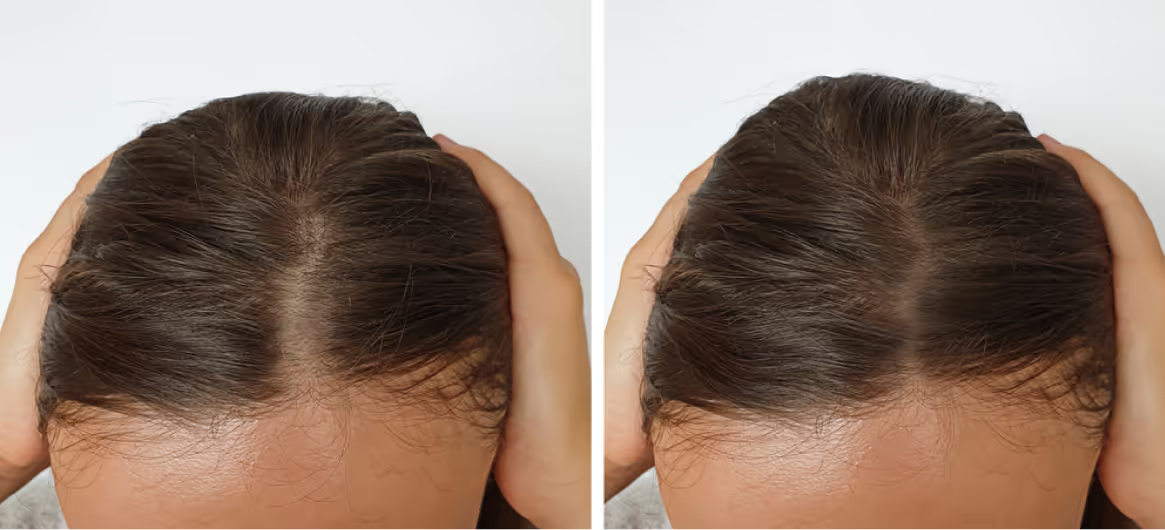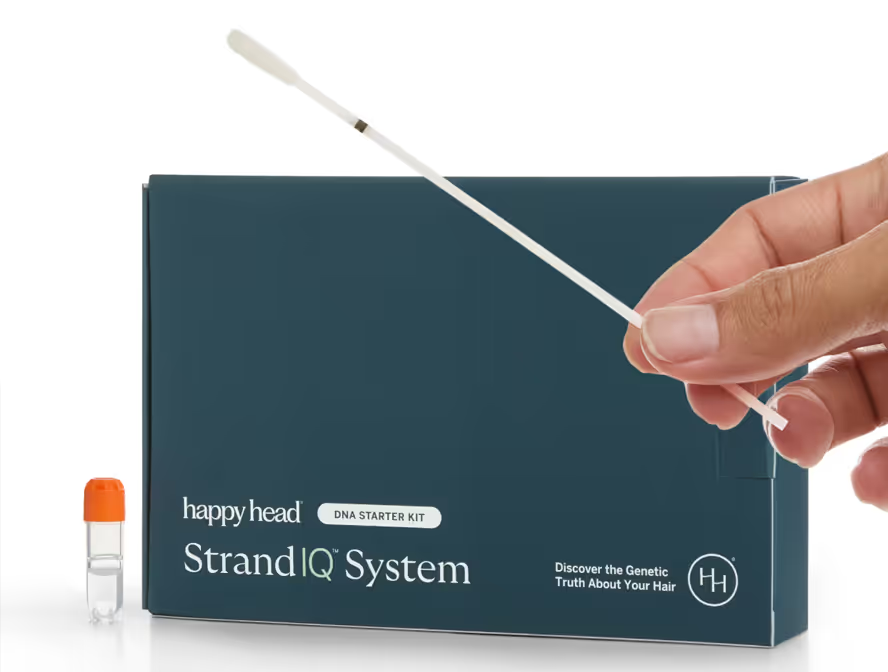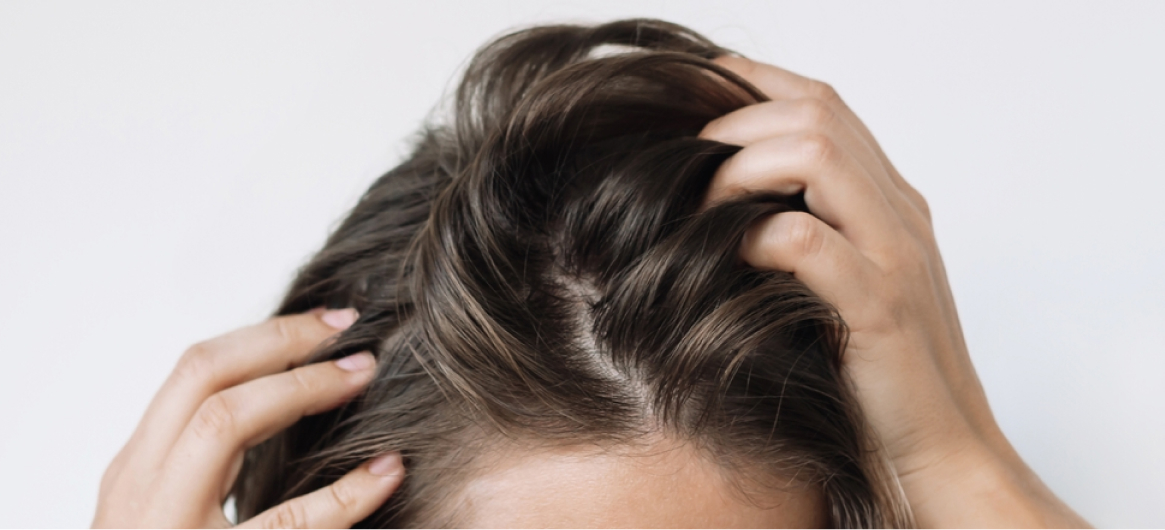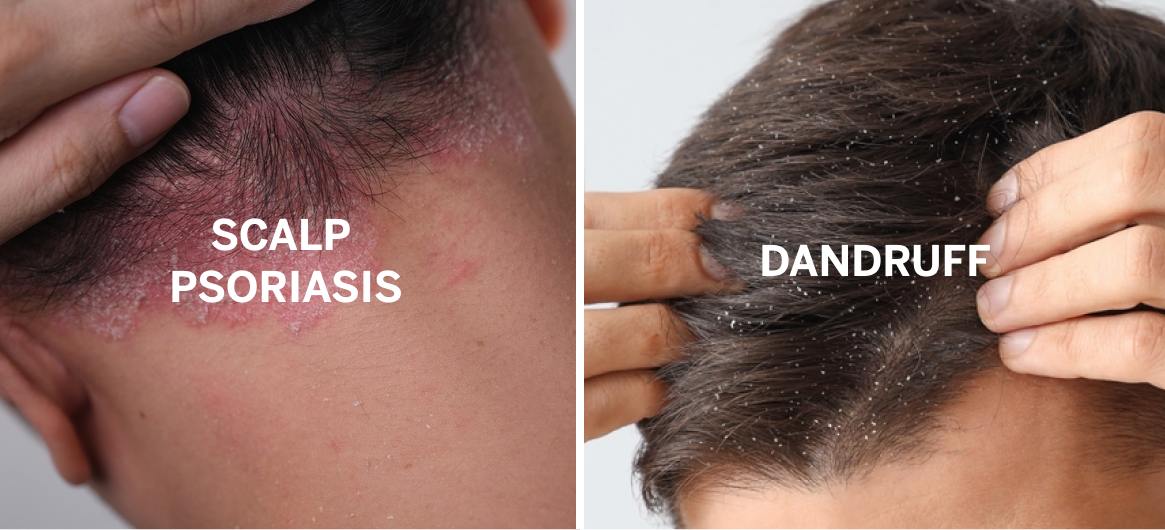Do you wish to regrow hair naturally in 3 weeks? It’s a bold goal, but it’s not entirely out of reach. While full regrowth takes time, the right combination of scalp care, nutrition, and lifestyle changes can spark visible improvements within weeks.
Whether you’re noticing thinning or just want to boost growth, understanding how hair grows and what supports it is essential. This guide offers evidence-based, dermatologist-approved tips to help you start regrowing hair with confidence.
Can You Really Regrow Hair Naturally in 3 Weeks?
It is possible to stimulate early signs of natural hair regrowth within 3 weeks, especially if follicles are still active and the scalp is healthy.
While full-length regrowth takes time, consistent efforts, such as scalp massage, nutritional support, and anti-inflammatory treatments, can improve follicle function and reduce shedding.
Noticeable thickening or baby hairs may appear within this timeframe in mild to moderate hair loss cases.
How Natural Hair Growth Occurs
Hair grows in a cycle with three main phases: anagen (growth), catagen (transition), and telogen (resting). On average, scalp hair grows about 0.5 inches (1.25 cm) per month, or roughly 0.125 inches in 3 weeks.
Natural growth depends on follicle activity, blood flow, and nutrient availability. The anagen phase can last several years, during which hair actively grows. Stimulating the scalp and nourishing follicles can enhance this process, particularly if the hair is in early-stage thinning.
Factors That Affect Rapid Hair Regrowth
Several factors influence how quickly hair responds to natural treatments. These include genetics, age, hormone levels (especially DHT sensitivity), stress, scalp health, diet, and underlying medical conditions.
For example, individuals with iron or biotin deficiencies may respond quickly to supplementation.
Additionally, consistent scalp stimulation, anti-inflammatory care, and avoiding harsh styling practices can significantly improve short-term regrowth potential by creating an optimal environment for the follicles.
Understanding Hair Loss and the Hair Growth Cycle
To effectively regrow hair naturally in 3 weeks, it’s essential to understand how hair grows—and why it falls out. Hair health is closely tied to the natural growth cycle, which involves multiple phases that must remain balanced for optimal growth.
Disruptions to this cycle, whether from stress, diet, or hormones, can lead to excessive shedding or thinning. Learning the root cause of your hair loss is the first step toward lasting improvement.
The Phases of Natural Hair Growth
Hair grows in three main phases:
- Anagen (growth phase): Lasts 2–7 years. About 85–90% of scalp hairs are in this phase at any given time.
- Catagen (transition phase): Lasts 2–3 weeks. Around 1–2% of hairs are in this short phase as the follicle shrinks.
- Telogen (resting phase): Lasts 3–4 months. Roughly 5–15% of hairs are in this phase, during which shedding occurs.
A healthy cycle ensures continuous renewal, while disruptions can trigger excessive hair fall or prevent new growth.
Common Reasons for Hair Loss
Hair loss can happen gradually or suddenly, depending on the cause. Understanding the underlying reason is essential for choosing the right natural strategies to promote regrowth.
Some of the most common causes include:
- Hormonal imbalances, such as elevated dihydrotestosterone (DHT) or thyroid dysfunction, can shrink hair follicles or disrupt the growth cycle.
- Nutritional deficiencies, particularly in iron, biotin, zinc, and protein, can lead to hair loss as these are critical for hair structure and follicle health.
- Stress and poor sleep can trigger telogen effluvium—a condition where hair prematurely enters the shedding phase.
- Harsh hairstyles and chemical treatments, including tight braids, frequent dyeing, or heat styling, can cause breakage and traction alopecia.
- Scalp issues, such as buildup, inflammation, or poor circulation, interfere with follicle function.
- Medical conditions, including autoimmune diseases such as alopecia areata, and certain medications or illnesses, can affect cellular turnover.
Each factor disrupts the natural growth cycle, making it harder for hair to regrow without targeted support.
The Best Ways To Regrow Hair Naturally in 3 Weeks
While full regrowth takes time, certain natural methods can help stimulate hair follicles, improve scalp health, and support early signs of new growth within just a few weeks.
The key is consistency—applying these strategies daily or several times per week can increase blood flow, reduce inflammation, and nourish your hair from the inside out.
Daily Scalp Massage and Natural Oils
Scalp massage boosts circulation to the hair follicles, encouraging nutrient delivery and oxygen flow. Using oils such as rosemary, castor, or peppermint oil adds anti-inflammatory and DHT-blocking benefits.
Massage with fingertips in small circular motions for 5–10 minutes daily, ideally before bedtime. Leave oil on overnight or rinse after 30–60 minutes, depending on skin sensitivity.
Using Onion Juice for Fast Hair Growth
Onion juice contains sulfur, which promotes collagen production and boosts circulation in the scalp. It may also reduce inflammation and support regrowth in patchy hair loss.
Apply freshly extracted onion juice to the scalp, leave it on for 15–30 minutes, then rinse thoroughly. Use 2–3 times per week for best results.

Aloe Vera and Its Benefits for Hair
Aloe vera soothes the scalp, reduces inflammation, and gently clears buildup that can block follicles. It also contains enzymes that may support healthy follicle function.
Apply pure aloe vera gel directly to the scalp and leave it on for 30–60 minutes before rinsing. Use 3–4 times weekly to support a clean, balanced scalp environment.
Biotin and Protein-Rich Foods for Natural Hair Growth
Hair is made primarily of keratin, a protein that depends on nutrients such as biotin, iron, and amino acids. Incorporating eggs, lentils, salmon, nuts, and leafy greens into your daily diet helps support strong, consistent hair growth.
Pairing biotin-rich foods with adequate protein ensures your follicles have the raw materials needed for regrowth.
DHT Blocker Foods and Their Impact
DHT (dihydrotestosterone) can shrink hair follicles in those genetically sensitive to it. Natural DHT-blocking foods—such as green tea, pumpkin seeds, flaxseeds, berries, and saw palmetto—may reduce the hormone’s impact.
Include these foods regularly to help protect follicles and promote regrowth, especially in cases of early-stage androgenetic alopecia.
Collagen, Vitamins, and Natural Supplements
Collagen supports scalp structure and follicle strength, while vitamins A, C, D, E, and B-complex (especially biotin and B12) fuel hair growth. Zinc, iron, and omega-3s are also essential.
Consider adding bone broth, citrus fruits, and leafy greens to your meals, or choose a high-quality supplement if dietary intake is insufficient.
Staying Hydrated and Detoxing for Healthy Hair
Dehydration can weaken hair strands and reduce scalp circulation, while toxin buildup may inflame follicles. Drinking at least 8–10 cups of water daily supports cellular health and detoxification.
You can enhance results by limiting processed foods and caffeine and adding herbal teas (such as nettle or dandelion root) to support internal cleansing.
Creating a 3-Week Natural Hair Regrowth Routine
A structured routine maximizes your chances of seeing real results when trying to regrow hair naturally in 3 weeks.
Week 1: Kick-Starting Hair Growth
Start with a scalp detox using apple cider vinegar mixed with water. Apply for 5 minutes to remove buildup. Begin daily scalp massages using rosemary or castor oil to stimulate blood flow.
Apply onion juice or aloe vera three times this week for follicle stimulation and inflammation control. Start a high-protein, biotin-rich diet, and increase hydration. Eliminate heat styling and harsh shampoos to reduce stress on fragile follicles during this critical first phase.
Week 2: Building on Early Results
Continue scalp massage daily, alternating between oils and aloe vera. Incorporate collagen, leafy greens, and DHT-blocking foods such as flaxseeds and pumpkin seeds into meals. Drink detox-supporting teas such as nettle or green tea.
Monitor scalp health, reduce stress through meditation or walks, and ensure you’re sleeping 7–9 hours nightly for cellular repair.
Week 3: Strengthening and Maintaining Progress
By week three, fine baby hairs or reduced shedding may become noticeable. Maintain your massage and nutrition routines, and consider adding a natural supplement with biotin, zinc, and collagen.
Keep sugar and processed foods to a minimum. This week focuses on consistency—solidifying healthy scalp conditions to support long-term, natural hair growth.
Lifestyle Changes To Support Natural Hair Growth
Natural hair regrowth isn’t just about what you put on your scalp—it’s also shaped by how you care for your entire body. Simple lifestyle adjustments, such as improving circulation and managing stress, can significantly impact your ability to regrow hair naturally in 3 weeks.
Exercise and Blood Circulation
Exercise increases blood flow to your scalp, delivering oxygen and nutrients to follicles. Even moderate activity helps. Activities like brisk walking, swimming, dancing, yoga, or light cardio can enhance microcirculation and support healthy follicle function.
Inverted poses like downward dog increase scalp blood flow. The stress reduction provided by physical activity also helps prevent hair loss. Aim for 30 minutes daily, 5 days a week.
Stress Reduction and Sleep for Hair Health
Chronic stress raises cortisol levels, which can disrupt the hair growth cycle and trigger excessive shedding. Prioritize daily stress-reduction techniques such as deep breathing, journaling, or mindfulness meditation.
Sleep is equally important —aim for 7–9 hours of restful sleep per night, as most cellular repair and hormone regulation occur while you rest.
Mistakes To Avoid When Trying To Regrow Hair Naturally in 3 Weeks
Even the best natural hair regrowth strategies can fall short if common mistakes are made. Avoiding these pitfalls helps protect your progress and ensures your scalp and follicles remain in the best possible condition for visible improvement.
Harmful Hair Care Habits
Frequent heat styling, tight hairstyles, and harsh shampoos can damage follicles and break fragile new growth. Avoid sulfates, parabens, and alcohol-based products that dry the scalp.
Over-washing strips natural oils, while under-washing may lead to buildup. Choose gentle, pH-balanced products and prioritize a clean, nourished scalp to support regrowth efforts.
Overlooking Scalp and Overall Health
Ignoring scalp health or internal wellness can sabotage results. Inflammation, buildup, or poor circulation on the scalp can block follicles, while nutritional gaps and chronic stress disrupt the hair cycle. A truly effective approach addresses both internal and external factors.
How To Track and Measure Natural Hair Growth Results
Track progress by taking weekly scalp photos under consistent lighting and angles to spot new growth or reduced thinning. Measure hair length at the crown or temples using a ruler or marked comb.
Note daily shedding amounts and scalp condition in a journal. Subtle improvements, such as less shedding or new baby hairs, indicate early success.
When Natural Methods Aren’t Enough
If you’ve followed a consistent natural routine for several weeks with little or no improvement, it may be time to consult a dermatologist. Rapid hair loss, visible scalp patches, or a family history of androgenetic alopecia often require medical treatment.
Early intervention with prescription medications, in-office therapies, or lab testing can prevent further loss and improve long-term regrowth outcomes.
Proven Medical Treatments To Consider
If natural methods aren’t delivering the results you need, evidence-based medical treatments can significantly enhance regrowth by targeting underlying causes such as hormonal imbalance, inflammation, or poor follicle stimulation.
A dermatologist can help determine which of the following options is best for your hair type and condition:
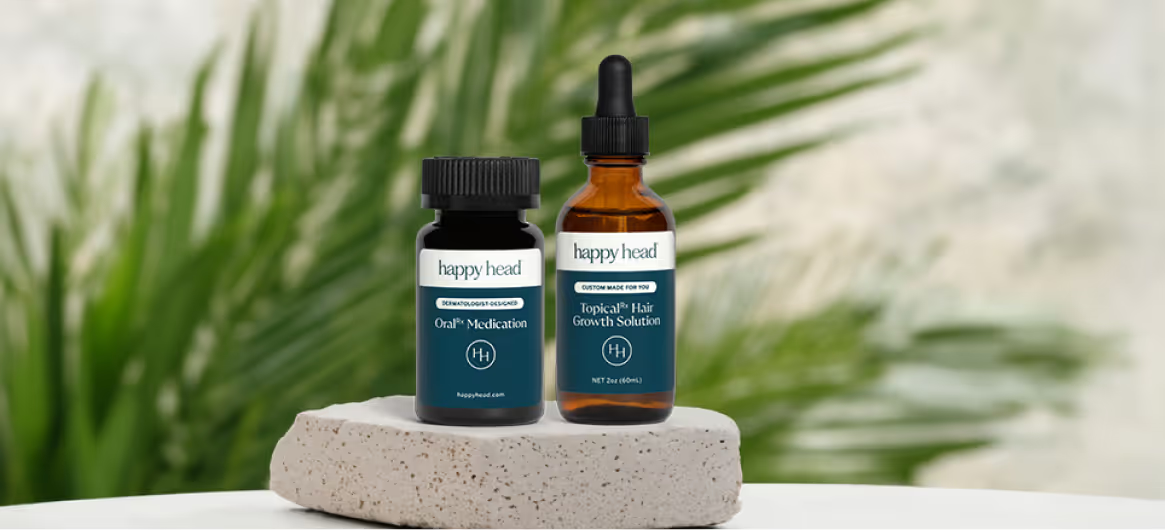
- Minoxidil (topical or oral): An over-the-counter or prescription medication that increases blood flow to follicles and extends the growth phase.
- Finasteride and Dutasteride: Finasteride products are an oral DHT blocker that helps prevent follicle shrinkage in androgenetic alopecia. Products with dutasteride are similar but stronger.
- Spironolactone: Spironolactone products are a hormonal treatment often prescribed to women to reduce DHT and hair thinning.
- Platelet-Rich Plasma (PRP) Therapy: This in-office therapy uses growth factors from your own blood to stimulate follicles.
- Low-Level Laser Therapy (LLLT): These devices boost circulation and cellular activity in the scalp using targeted light energy.
What To Expect When Trying To Regrow Hair Naturally in 3 Weeks
While dramatic transformation is unlikely in just three weeks, consistent effort can lead to early signs of improvement, such as reduced shedding, better scalp health, and the appearance of fine baby hairs.
Pairing natural strategies with healthy lifestyle choices creates a strong foundation for long-term growth. With consistency and patience, it is absolutely possible to begin to regrow hair naturally in 3 weeks—just keep your expectations realistic.
Talk to a board-certified dermatologist to discuss your goals and find the solution that is best for you.
Frequently Asked Questions
How can I regrow my hair in 3 weeks?
While complete regrowth is unlikely in 3 weeks, you may be able to stimulate early hair growth by massaging the scalp daily with natural oils, improving your diet, using onion juice or aloe vera, reducing stress, and avoiding harsh hair products to support follicle health.
What's the fastest way to regrow hair?
The fastest natural methods include daily scalp massage with rosemary or castor oil, eating biotin- and protein-rich foods, using onion juice or aloe vera, and minimizing stress. Results vary, but these approaches may jumpstart growth and improve hair strength within weeks.
How can I reopen my hair follicles naturally?
To support dormant follicles, focus on increasing scalp circulation through massage, apply ingredients such as rosemary oil or peppermint oil, maintain a nutrient-rich diet, and reduce inflammation with aloe vera or green tea rinses. Consistency is key for visible improvement.
Can I regrow my lost hair naturally?
You may be able to regrow hair naturally if the follicles are still intact. Use scalp-stimulating oils, eat a balanced diet with key vitamins and proteins, and reduce stress. However, scarring alopecia or prolonged follicle inactivity may require medical treatment.



